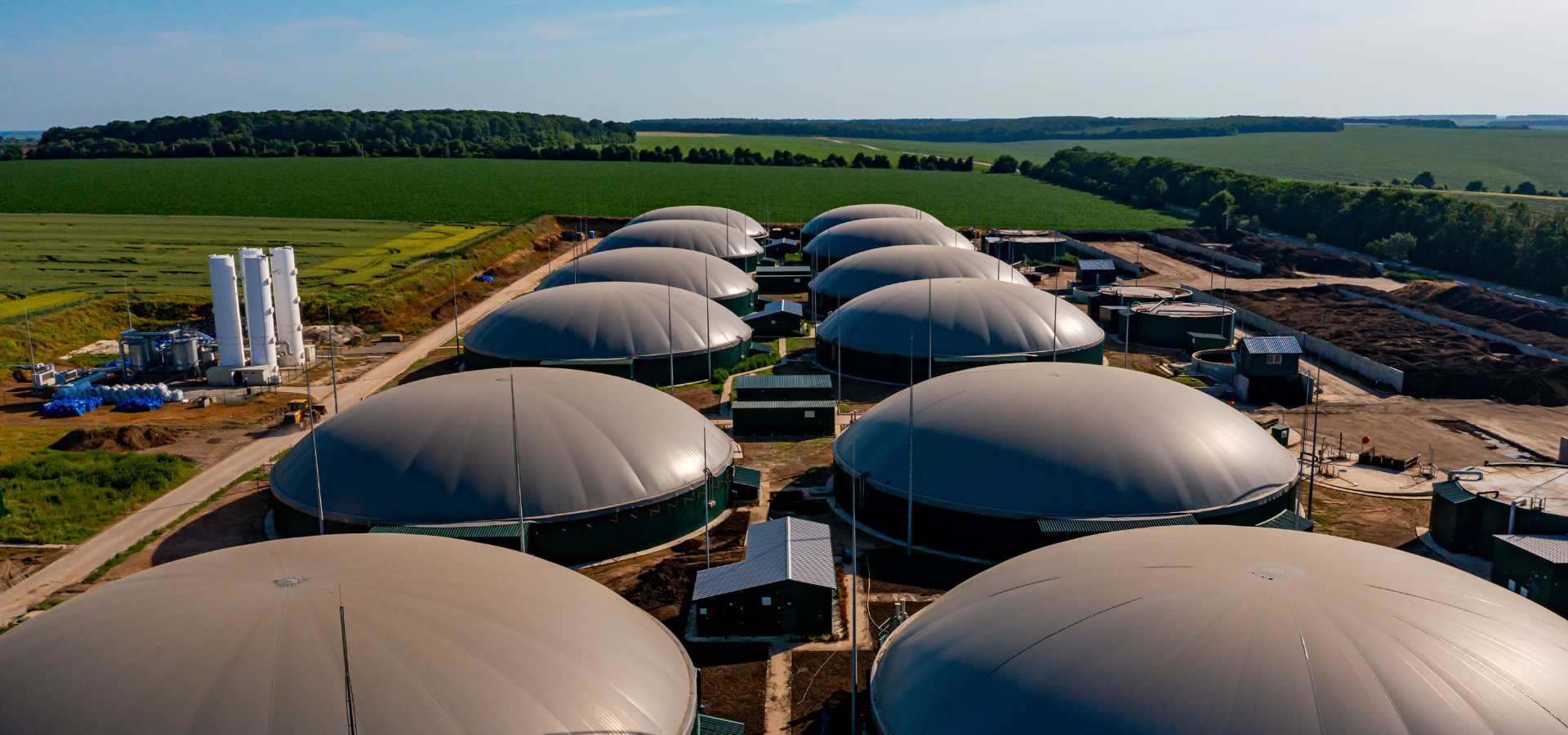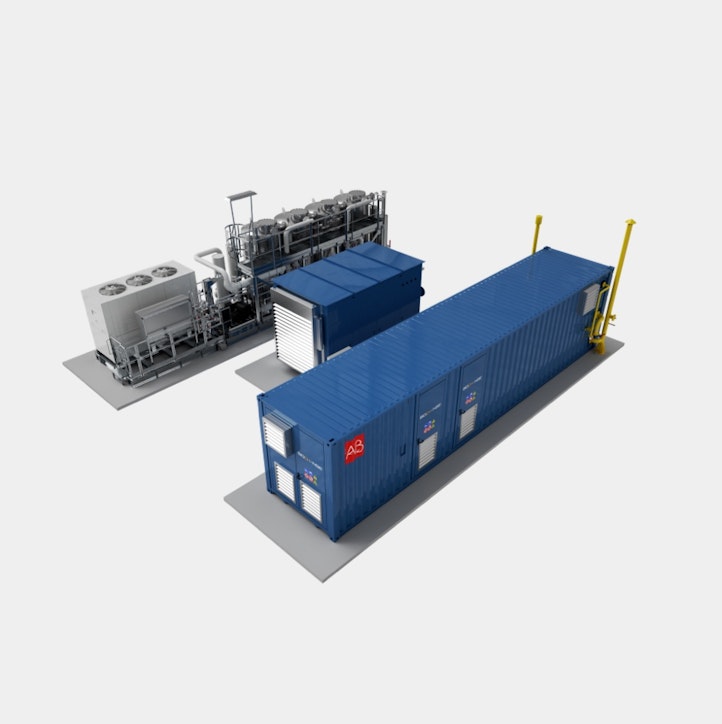At the global level, awareness of the importance of biomethane in terms of energy and ecological transition is increasing. When biomethane derives from waste or scraps, it is a totally renewable fuel, which on one hand can guarantee an increase in the self-supply capacity of each individual State, thus reducing dependence on supplies from third countries, and on the other can ensure more competitive prices. In Italy, there are currently 85 biomethane plants.
The Italian Energy Context
Not only do they allow electricity to be generated without emitting greenhouse gases, but they are virtually inexhaustible: renewable energies are the backbone of Italy's energy transition. Alternatives to fossil fuels, in fact, represent an important share of the country's energy production, with a constant increase year after year. Despite the persistence of the use of non-renewable energy sources, as well as fossil fuels, such as natural gas, coal and oil largely imported from abroad, Italy is the third largest producer of green energy in Europe.
The generation of green energy in Italy presents important differences especially based on the characteristics of the territory and the distribution of renewable resources. Hydroelectric power is dominant where the terrain has steep slopes, as in the Alpine arc and, to a lesser extent, along the Apennine ridge. Photovoltaic production is more common in the south, thanks to the lower latitude and the greater sunshine. Wind energy is, in particular, collected in the large islands, Sicily and Sardinia, to which in general the southern part of the Apennine ridge is added, starting from Puglia, Campania and Basilicata. Geothermal energy, finally, has Tuscany as a pole of excellence, for historical reasons and geological characteristics.
The key Italian renewable energy objectives and strategies, identified on the basis of European rules include:
● Decarbonisation: abandonment of coal for electricity production and consequent construction of sufficient plants to replace the corresponding energy production and to keep the electricity system in balance;
● Energy efficiency: reduction, by 2030, of Europe's primary energy needs by 32.5% and deployment, by 2030, of 1.6 ML of pure electric cars and 4.5 ML of hybrid cars on a circulating car fleet of 37 ML of vehicles;
● Energy security: increasing renewable sources, energy efficiency and diversification of sources to improve the security of supply;
● Internal market: greater flexibility of the electricity system and integration of the growing share of renewables by the market;
● Research, innovation and competitiveness: improving the capacity of the research system to oversee and develop the product and process technologies essential for the energy transition.
Current state of biomethane in Italy
Biomethane is one of the solutions to differentiate the energy mix, limit dependence on foreign gas and contribute to the process of achieving the Italian energy transition.
In 2020 in Italy 11 new plants went into operation and in 2021 the production plants, between biogas and biomethane, totalled about 2000. In Italy there are currently 85 biomethane plants. At the European level, however, the record year so far was 2021, with biomethane production reaching 3 billions cubic metres.
In general it is possible to produce biogas, and proceed with obtaining biomethane through upgrading, with any fermentable organic substance, both of vegetable and animal origin. Raw biogas can be obtained from the anaerobic digestion of agricultural biomass (by-products, agricultural waste and animal manure), agro-industrial (food processing waste) or the organic fraction of urban solid waste as well as food residues or food preparations and similar fractions, such as the organic fraction of municipal solid waste (OFMSW). Once the biogas-to-biomethane upgrading has been carried out, it must be refined, in order to eliminate the components that are not suitable for feeding the gas into the network (CO₂).
Biomethane: the regulatory framework
Biogas and biomethane farms are at the centre of the agroecological transition thanks to the opportunities of the National Recovery and Resilience Plan (NRPR) related to the development of biomethane and 4.0 agriculture measures which will help consolidate the role of agriculture as one of the main actors against the energy and climate crisis.
To reach the EU's decarbonization targets by 2030, the NRPR foresees investments of around Euro 1.9 billion for the development of biomethane in Italy, regulated by applicable regulations and legislative decrees. The objective of the investment is to increase production by 2.3-2.5 billion cubic metres, allowing an overall saving of greenhouse gases between 80 and 85 percent compared to the life cycle of fossil methane.
The implementing rules of the so-called Ter Biomethane Decree were issued and entered into force in January 2023. The new decree not only introduces new uses for the biomethane produced (not only transport but also other uses and corporate self-consumption) but also offers the possibility of taking advantage of two incentives, one on account of energy and one on account of capital. So the incentives can be accessed by companies that have an authorisation for the conversion of the existing plant or for a new plant. The requirements to access the call are:
Have an appropriate authorisation;
Possess a definitively accepted network connection quote, if necessary;
Respect the covering of the biogas recovery tanks for at least 30 days or have a composting plant available;
Respect the desired level of sustainability based on the intended use of biomethane;
The tariffs differ according to the net production of biomethane: up to 100 standard m³/h the tariff is 130,14 €/MWh, above this size it is 124,48 €/MWh, including incentives.*
According to these facilities, an all-inclusive tariff up to 250 standard m³/h sees the GSE pay an incentive and withdraw both the share or molecule of biomethane and the guarantee of origin. Above this size, a premium rate applies: the GSE pays an incentive and the manufacturer sells both the biomethane molecule and the guarantee of origin to the market.
In order not to risk incurring the forfeiture of incentives, the plants can start work only if successfully inserted in the ranking of the call. A total of 18 months are required to build the plant and a further 9 months during which a reduction of the operation is proposed by the GSE, all considering the final date of commissioning of the plant, i.e. 30 June 2026.
*last update on 12/21/2023
Future prospects for biomethane
Looking beyond national borders, the biomethane sector is increasingly recognised an important role to contribute to the energy transition path and to the development of renewable sources. Finally, the European Parliament has recently included, within the package of gas market reforms, the binding production target of 35 billion cubic metres of biomethane by 2030, in line with the objectives of the REPowerEu: a measure that encourages the growth of renewable gases generating positive repercussions for the primary sector.
Over the next three years Italy will continue the dialogue with Europe and its actors to better outline the role of biomass in the Mediterranean area. Our country will also have to update the National Energy and Climate Plan and to do so it will not be able to ignore the latest events, revising the estimates and the potential forecasts for the sector in 2019 upwards.
Biogas and biomethane farms represent two important assets to promote the circular economy, accompany a sustainable green transition and contribute to energy security and independence. The interventions of the NRPR constitute an important impetus towards a 4.0 agriculture model that guarantees optimization and greater efficiency of the production processes, less use of chemicals and soil protection. In this, biogas and biomethane represent a significant strategic heritage to respond to the renewable energy challenge, guarantee food autonomy, care for the territory and protection of the climate.
Conclusions
In conclusion, biomethane makes it possible to meet the objectives of reducing emissions by exploiting existing gas networks and helping to increase national production. This development also has positive repercussions on the agri-food sector, promoting an economic model based on sustainability and circularity in the use of resources.
With its current 85 plants, Italy has great potential in terms of biomethane production and could lead our country to the first European places in the production of green gas. Recent regulatory developments should also give new impetus to the sector, in the wake of the binding European production target of 35 billion cubic metres of biomethane by 2030.
Renewables, in Italy as well as throughout Europe, is a game more open than ever. Thanks to its characteristics, biomethane integrates perfectly and in a completely complementary way with other renewable sources, such as solar and wind, thus representing a solution capable of providing an important development to Italy’s energy transition.
Sources

